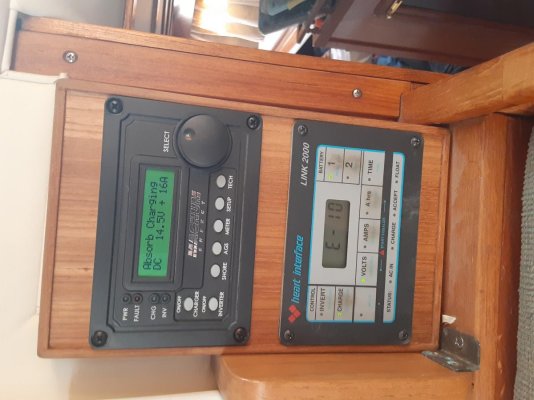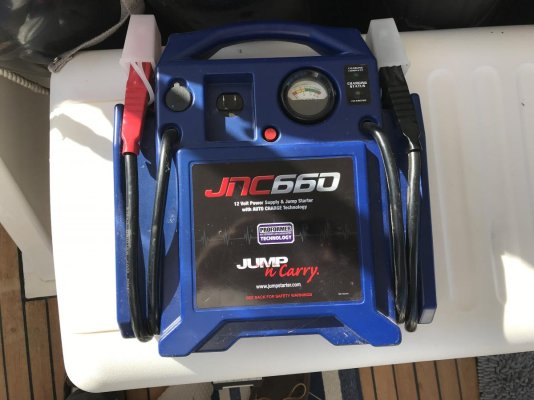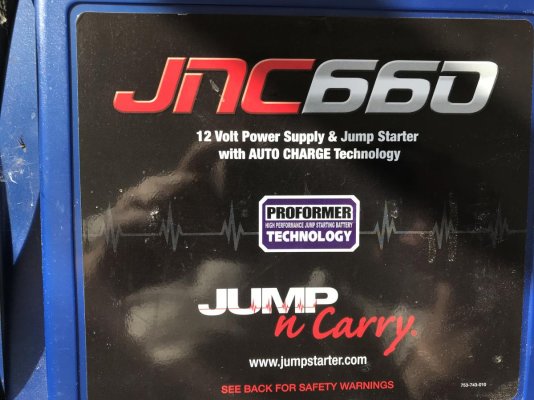You're running 10 liter Cats? Twin 3208s?
Twin 3106s with 3200 hours on rebuild. They are remarkably quick starting.
On your Cats do they shut down by turning the key off?... I've measured the current draw on mine, it's 7 AMPS!
That is startling.
Regarding jump packs and starting 3208s. If you have truly run your starting capacity flat then Comodave's jump pack may not be enough. ... I'm not trying talk you out of a jump pack, just cautioning that it may not be big enough.
I still favor the jump pack solution, especially after watching the BoatUS guy start both my engines with his. I just need to ensure I get the right size. Clearly, this is the case where bigger is better.
I think Art and I are actually in "violent agreement" on this point. The better packs have built in charger, regulator, meter and appropriate cords. As my engine room has AC outlets, I think it will resemble his dedicated spare battery.
...and I'll start off by making some assumptions here. You have the OEM alternators, 55 AMPs internally regulated? If yes, read on.
With the OEM alts you likely have a system where port alt charges one bank, stbd alt the other.
Nope.

Dual Balmar alternators, 70 or 100 amp each (I'm not at the boat right now to check, home in Ashland with other issues

)
External Balmar612 regulators, each serving one bank, but the banks can be swapped through the big red switches.
Normal underway DC loads
- 7 AMPs to hold the fuel solenoid open
- 8 AMPs intermittent for the refer
- ?? AMPs to run navigation electronics and VHFs. I have a radar, I use it. They tend to be a big draw.
- Hurricane hydronic heater
- Additional plug in cooler on deck
Similar loads
Nav program runs on a laptop and my Big Bay 1000nit monitor pulls 9amps
AIS, RADAR, couple GPS, depth finder
no drain items:
cabin heat is diesel drip with Seebeck fan,
On-deck cooler is ice chest.
Cooking is Wallas diesel.
I would like to have a setup like yours, two big banks, no gen. I'd also have a dedicated start bank.
I still like my current setup, with the addition of a backup start capacity. This whole conversation began because 1. I ignored all the signs that my batteries were failing from old age. 2. I suspect that my two banks are not "isolate-able" from each other, permitting me to use one and "save" the other, as I was briefed.
Issue one is remedied by throwing money at it, which I will do before I leave the marina again.
Issue two requires more sophistication than I command, but I will find someone who can tell me what is true.





 )
)